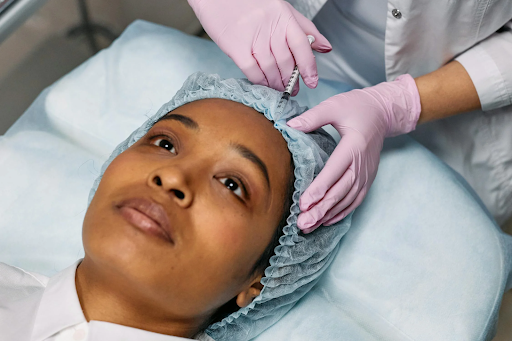
Known for their rapid face volume restoration and wrinkle smoothing, conventional dermal fillers In the past ten years, cosmetic dermatology has altered greatly. For more natural and long-lasting outcomes, modern treatments mix skin renewal with volume restoration. Groundbreaking are polynucleotides, a creative and regenerating skin health therapy. Unlike conventional fillers that merely add volume, polynucleotide-based treatments repair, hydrate, and fortify the skin from the inside out. A comprehensive face rejuvenation therapy enhances skin quality, tissue regeneration, and suppleness. Patients see volume changes and develop stronger, healthier skin.
Among the most thrilling developments is the salmon sperm treatment, a type of polynucleotide therapy derived from highly refined DNA fragments. Unlike dermal fillers, which usually lift and volumise, this therapy stimulates natural skin regeneration mechanisms. It provides a framework that supports tissue repair, collagen synthesis, and cell growth. The outcome is not an artificially plumped look but rather a naturally refreshed, firmer, and more radiant complexion that evolves slowly over time.
Basic mechanical variations
Traditional hyaluronic acid-based dermal fillers replace volume immediately after injection. They instantly fill wrinkles and emphasise facial lines. They can help reduce nasolabial creases and under-eye hollows, but their effects typically persist for six to 18 months, depending on the substance and treatment location. Polynucleotides focus on skin health and quality rather than form. The skin repairs itself through cell regeneration and collagen production, facilitated by polynucleotides. The progressive shift makes skin smoother, stronger, and more resilient. Beyond aesthetics, they improve skin resistance to ageing and environmental harm.
Organic outcomes compared to instant volume
One of the most significant differences between polynucleotide treatments and conventional fillers is the results. Fillers can sometimes look “overfilled” if used improperly. But polynucleotide treatments enhance skin naturally and discreetly. Many patients remark that their skin looks fresher, moister, and healthier without cosmetic changes.
Since polynucleotides interact with epidermal processes, improvements closely follow the body’s natural healing and regeneration rhythms. They may be suitable for patients who want a natural look while treating early signs of ageing, skin thinning, or elasticity.
Skin health advantages and durability
The advantages of polynucleotide therapies can keep evolving long after the first treatment course is finished, unlike conventional fillers, which need re-injection to preserve results and deteriorate with time. Patients can see ongoing changes in skin firmness and texture for months while collagen formation and tissue regeneration are encouraged. Maintenance treatments extend these benefits, strengthening the skin with each session. Due to their anti-inflammatory properties, polynucleotides soothe wounded or sensitive skin, making them an ideal choice for individuals with skin conditions that preclude the use of conventional fillers.
Final thoughts
Though they have diverse uses, traditional dermal fillers and polynucleotides both play important roles in aesthetic medicine. At the same time, fillers emphasise quick increase in volume and sculpting; therapies like the salmon sperm therapy seek to revitalise the skin from the inside, fostering long-term health and natural beauty. Knowing these distinctions helps patients choose more wisely how they approach their cosmetic objectives and skin care.


























